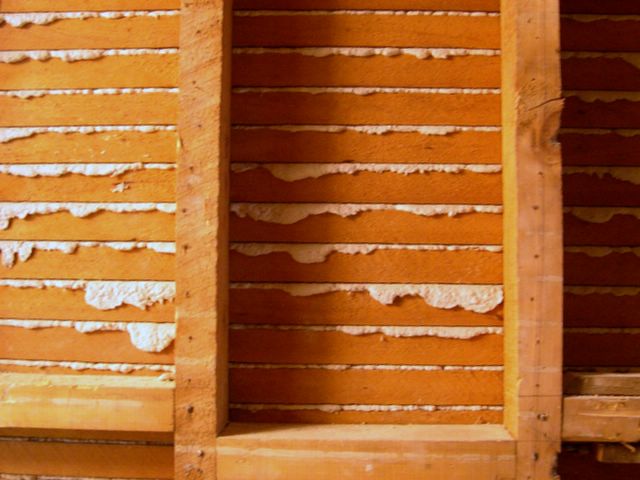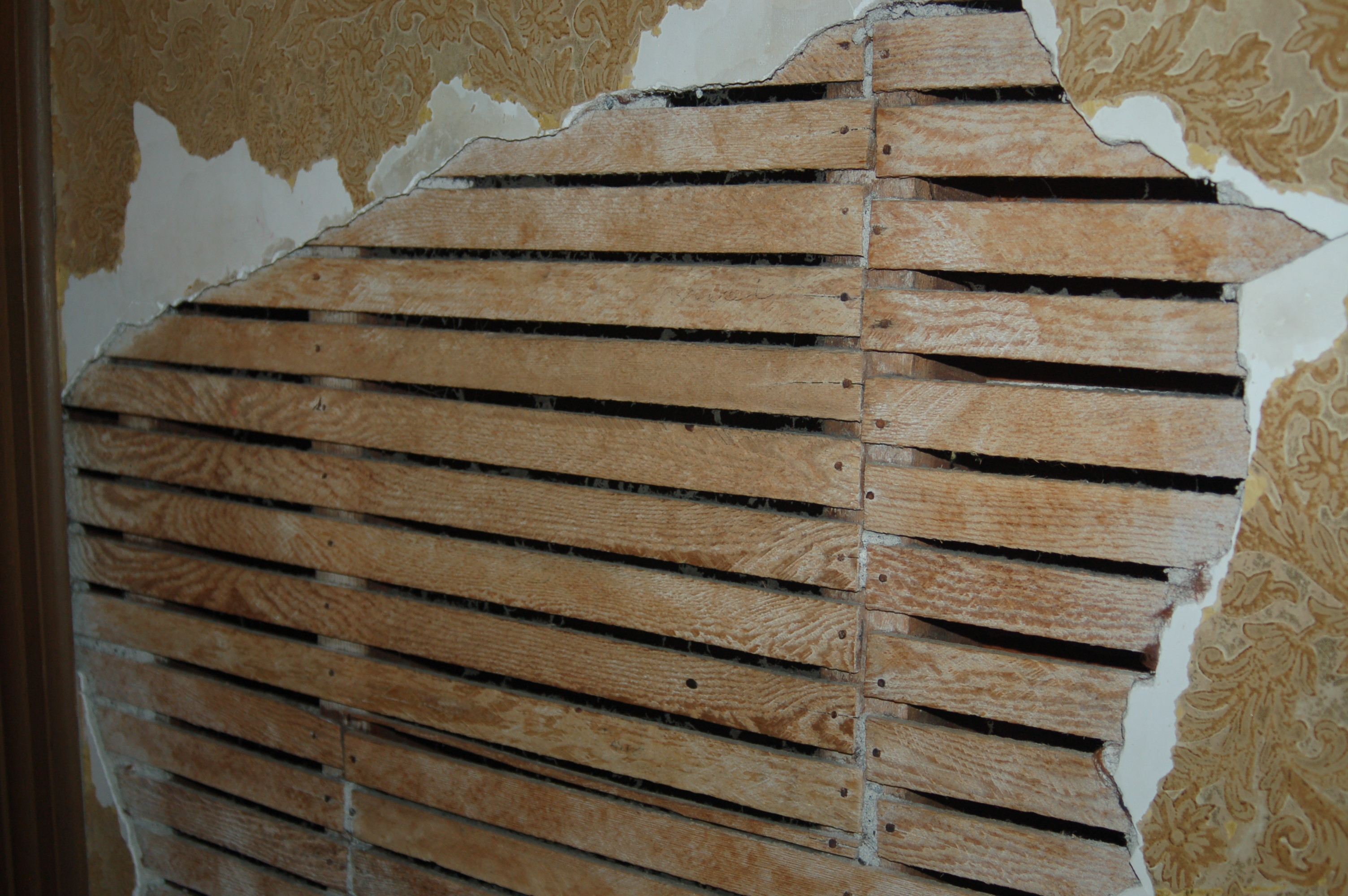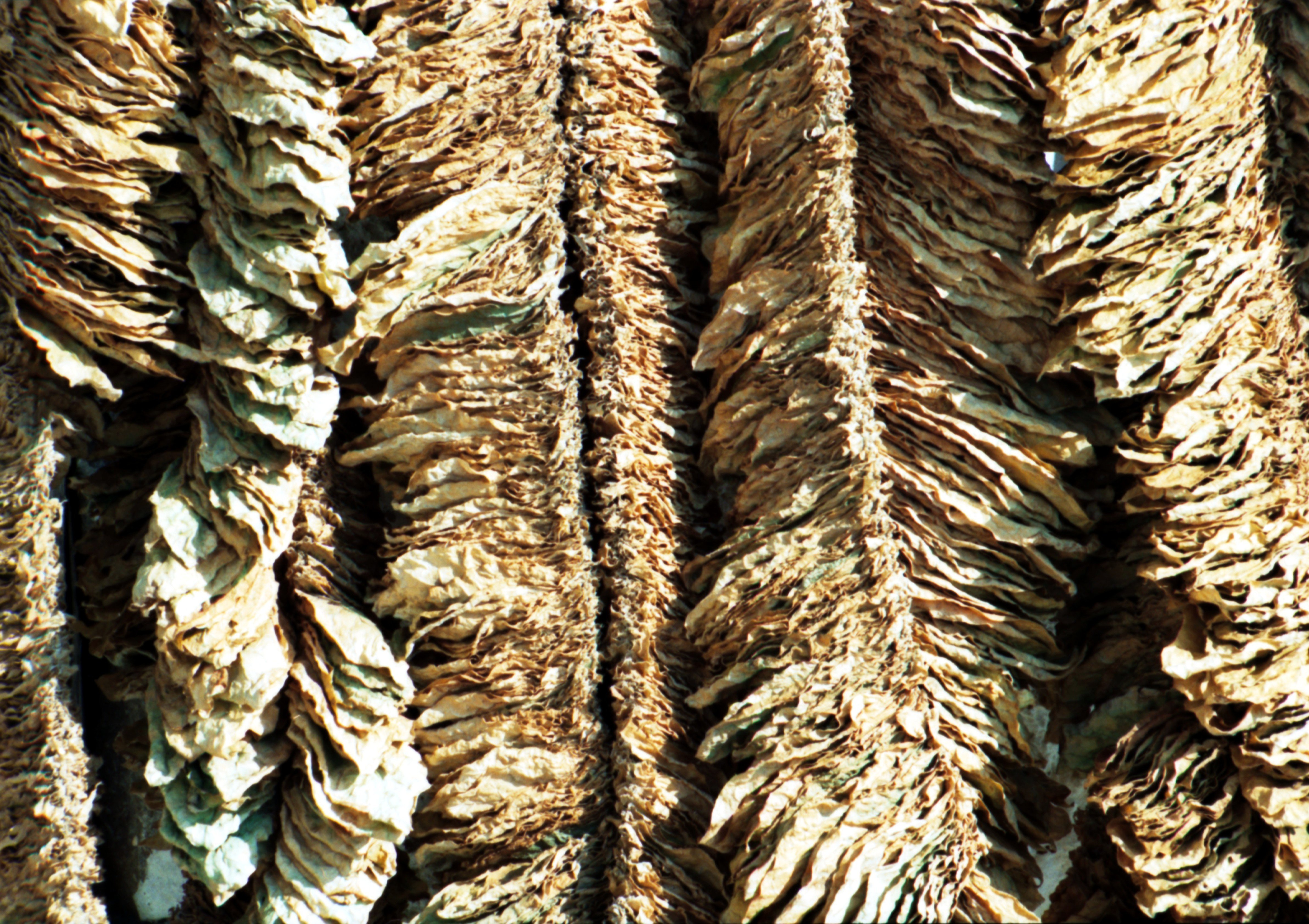|
Lath
A lath or slat is a thin, narrow strip of straight-wood grain, grained wood used under roof shingles or tiles, on lath and plaster walls and ceilings to hold plaster, and in Latticework, lattice and Trellis (architecture), trellis work. ''Lath'' has expanded to mean any type of backing material for plaster. This includes metal wire mesh or expanded metal that is applied to a wood or metal framework as matrix over which stucco or plaster is applied, as well as wallboard products called gypsum or rock lath.Ching, Frank. ''A visual dictionary of architecture''. New York: Van Nostrand Reinhold, 1995. 198. Print. Historically, Reed mat (plastering), reed mat was also used as a lath material. One of the key elements of lath, whether wooden slats or wire mesh, are the openings or gaps that allow plaster or stucco to ooze behind and form a mechanical bond to the lath. This is not necessary for gypsum lath, which relies on a chemical bond. Etymology The word is recorded from the late ... [...More Info...] [...Related Items...] OR: [Wikipedia] [Google] [Baidu] |
Lath
A lath or slat is a thin, narrow strip of straight-wood grain, grained wood used under roof shingles or tiles, on lath and plaster walls and ceilings to hold plaster, and in Latticework, lattice and Trellis (architecture), trellis work. ''Lath'' has expanded to mean any type of backing material for plaster. This includes metal wire mesh or expanded metal that is applied to a wood or metal framework as matrix over which stucco or plaster is applied, as well as wallboard products called gypsum or rock lath.Ching, Frank. ''A visual dictionary of architecture''. New York: Van Nostrand Reinhold, 1995. 198. Print. Historically, Reed mat (plastering), reed mat was also used as a lath material. One of the key elements of lath, whether wooden slats or wire mesh, are the openings or gaps that allow plaster or stucco to ooze behind and form a mechanical bond to the lath. This is not necessary for gypsum lath, which relies on a chemical bond. Etymology The word is recorded from the late ... [...More Info...] [...Related Items...] OR: [Wikipedia] [Google] [Baidu] |
Lath And Plaster
Lath and plaster is a building process used to finish mainly interior dividing walls and ceilings. It consists of narrow strips of wood ( laths) which are nailed horizontally across the wall studs or ceiling joists and then coated in plaster. The technique derives from an earlier, more primitive process called wattle and daub. Lath and plaster largely fell out of favour in the U.K. after the introduction of plasterboard in the 1930s.Jeff Howell''On the level: is the old plaster best?'' The Telegraph (London), May 10, 2006. Retrieved 2012-03-30. In Canada and the United States, wood lath and plaster remained in use until the process was replaced by transitional methods followed by drywall (the North American term for plasterboard) in the mid-twentieth century. Description The wall or ceiling finishing process begins with wood or metal laths. These are narrow strips of wood, extruded metal, or split boards, nailed horizontally across the wall studs or ceiling joists. Each wall ... [...More Info...] [...Related Items...] OR: [Wikipedia] [Google] [Baidu] |
Plaster
Plaster is a building material used for the protective or decorative coating of walls and ceilings and for moulding and casting decorative elements. In English, "plaster" usually means a material used for the interiors of buildings, while "render" commonly refers to external applications. Another imprecise term used for the material is stucco, which is also often used for plasterwork that is worked in some way to produce relief decoration, rather than flat surfaces. The most common types of plaster mainly contain either gypsum, lime, or cement,Franz Wirsching "Calcium Sulfate" in Ullmann's Encyclopedia of Industrial Chemistry, 2012 Wiley-VCH, Weinheim. but all work in a similar way. The plaster is manufactured as a dry powder and is mixed with water to form a stiff but workable paste immediately before it is applied to the surface. The reaction with water liberates heat through crystallization and the hydrated plaster then hardens. Plaster can be relatively easily worked ... [...More Info...] [...Related Items...] OR: [Wikipedia] [Google] [Baidu] |
Stucco
Stucco or render is a construction material made of aggregates, a binder, and water. Stucco is applied wet and hardens to a very dense solid. It is used as a decorative coating for walls and ceilings, exterior walls, and as a sculptural and artistic material in architecture. Stucco can be applied on construction materials such as metal, expanded metal lath, concrete, cinder block, or clay brick and adobe for decorative and structural purposes. In English, "stucco" sometimes refers to a coating for the outside of a building and "plaster" to a coating for interiors; as described below, however, the materials themselves often have little to no differences. Other European languages, notably Italian, do not have the same distinction; ''stucco'' means ''plaster'' in Italian and serves for both. Composition The basic composition of stucco is cement, water, and sand. The difference in nomenclature between stucco, plaster, and mortar is based more on use than composition. Until ... [...More Info...] [...Related Items...] OR: [Wikipedia] [Google] [Baidu] |
Expanded Metal
Expanded metal is a type of sheet metal which has been cut and stretched to form a regular pattern (often diamond-shaped) of metal mesh-like material. It is commonly used for fences and grates, and as metallic lath to support plaster or stucco. Description Expanded metal is stronger than an equivalent weight of wire mesh such as chicken wire, because the material is flattened, allowing the metal to stay in one piece. The other benefit to expanded metal is that the metal is never completely cut and reconnected, allowing the material to retain its strength. History The inventor and patentee of expanded metal is John French Golding, his first British patent was issued in 1884. He forged partnerships with Hartlepool industrialists Mathew Gray, Christopher Furness and Robert Irving Jr., who together with W.B Close brought the manufacture of expanded metal to Hartlepool. The Expanded Metal Company Limited of Hartlepool, United Kingdom, remains a recognised market leader globally in th ... [...More Info...] [...Related Items...] OR: [Wikipedia] [Google] [Baidu] |
Wallboard
Drywall (also called plasterboard, dry lining, wallboard, sheet rock, gypsum board, buster board, custard board, and gypsum panel) is a panel made of calcium sulfate dihydrate (gypsum), with or without additives, typically extruded between thick sheets of facer and backer paper, used in the construction of interior walls and ceilings. The plaster is mixed with fiber (typically paper, glass wool, or a combination of these materials); plasticizer, foaming agent; and additives that can reduce mildew, flammability, and water absorption. In the middle of the 20th century, drywall construction became prevalent in North America as a time- and labor-saving alternative to lath and plaster. History The first plasterboard plant in the UK was opened in 1888 in Rochester, Kent. Sackett Board was invented in 1894 by Augustine Sackett and Fred Kane, graduates of Rensselaer Polytechnic Institute. It was made by layering plaster within four plies of wool felt paper. Sheets were thick with o ... [...More Info...] [...Related Items...] OR: [Wikipedia] [Google] [Baidu] |
Reed Mat (plastering)
{{unreferenced, date=October 2008 Reed mat is lathing supplied in a roll. It is made from natural reeds laid parallel, and bound using zinc-plated narrow gauge wire to form a long sheet. Reed mat is suitable for internal use as a base for plastering on walls and ceilings. It can be used against a solid background or over studs or joists as a practical alternative lining material to gypsum plasterboard, clay panel or lath and plaster. Reed mats are particularly suited to using with lime Lime commonly refers to: * Lime (fruit), a green citrus fruit * Lime (material), inorganic materials containing calcium, usually calcium oxide or calcium hydroxide * Lime (color), a color between yellow and green Lime may also refer to: Botany ..., clay or gypsum plasters in building restoration and new-build. External links Reed mat usage Building materials ... [...More Info...] [...Related Items...] OR: [Wikipedia] [Google] [Baidu] |
Battens
A batten is most commonly a strip of solid material, historically wood but can also be of plastic, metal, or fiberglass. Battens are variously used in construction, sailing, and other fields. In the lighting industry, battens refer to linear light fittings. In the steel industry, battens used as furring may also be referred to as "top hats", in reference to the profile of the metal. Roofing ''Roofing battens'' or ''battening'', also called ''roofing lath'', are used to provide the fixing point for roofing materials such as shingles or tiles. The spacing of the battens on the trusses or rafters depend on the type of roofing material and are applied horizontally like purlins. Battens are also used in metal roofing to secure the sheets called a ''batten-seam roof'' and are covered with a ''batten roll joint''. Some roofs may use a grid of battens in both directions, known as a ''counter-batten system'', which improves ventilation. Roofing battens are most commonly ... [...More Info...] [...Related Items...] OR: [Wikipedia] [Google] [Baidu] |
Roof Shingles
Roof shingles are a roof covering consisting of individual overlapping elements. These elements are typically flat, rectangular shapes laid in courses from the bottom edge of the roof up, with each successive course overlapping the joints below. Shingles are held by the roof rafters and are made of various materials such as wood, slate, flagstone, metal, plastic, and composite materials such as fibre cement and asphalt shingles. Ceramic roof tiles, which still dominate in Europe and some parts of Asia, are still usually called tiles. Roof shingles may deteriorate faster and need to repel more water than wall shingles. They are a very common roofing material in the United States. Etymology and nomenclature Shingle is a corruption of German meaning a roofing slate."Shingle" def. 1. Whitney, Wil ... [...More Info...] [...Related Items...] OR: [Wikipedia] [Google] [Baidu] |
Cultivation Of Tobacco
The cultivation of tobacco usually takes place annually. The tobacco is germinated in cold frames or hotbeds and then transplanted to the field until it matures. It is grown in warm climates with rich, well-drained soil. About ''4.2 million'' hectares of tobacco were under cultivation worldwide in 2000, yielding over seven million tonnes of tobacco. Sowing and growth Tobacco seeds are scattered onto the surface of the soil, as their germination is activated by light. In colonial Virginia, seedbeds were fertilized with wood ash or animal manure (frequently powdered horse manure). Seedbeds were then covered with branches to protect the young plants from frost damage, and the plants were left alone until around April. In the 19th century, young plants came under increasing attack from certain types of flea beetles, ''Epitrix cucumeris'' or ''Epitrix pubescens'', which destroyed half the U.S. tobacco crops in 1876. In the years afterward, many experiments were attempted and discus ... [...More Info...] [...Related Items...] OR: [Wikipedia] [Google] [Baidu] |
Venetian Blind
A window blind is a type of window covering. There are many different kinds of window blinds which use a variety of control systems. A typical window blind is made up of several long horizontal or vertical slats of various types of hard material, including wood, plastic or metal which are held together by cords that run through the blind slats. Vertical blinds run along a track system which can tilt open and closed and move side-to-side. Window blinds can be manoeuvred with either a manual or remote control by rotating them from an open position, with slats spaced out, to a closed position where slats overlap and block out most of the light. There are also several types of window coverings, called shades, that use a single piece of soft material instead of slats. The term window blinds can also be used to describe window coverings more broadly. In this context window blinds include almost every type of window covering, whether it is a hard or soft material; i.e. shutters, rol ... [...More Info...] [...Related Items...] OR: [Wikipedia] [Google] [Baidu] |
French Language
French ( or ) is a Romance languages, Romance language of the Indo-European languages, Indo-European family. It descended from the Vulgar Latin of the Roman Empire, as did all Romance languages. French evolved from Gallo-Romance, the Latin spoken in Gaul, and more specifically in Northern Gaul. Its closest relatives are the other langues d'oïl—languages historically spoken in northern France and in southern Belgium, which French (Francien) largely supplanted. French was also substratum, influenced by native Celtic languages of Northern Roman Gaul like Gallia Belgica and by the (Germanic languages, Germanic) Frankish language of the post-Roman Franks, Frankish invaders. Today, owing to France's French colonial empire, past overseas expansion, there are numerous French-based creole languages, most notably Haitian Creole language, Haitian Creole. A French-speaking person or nation may be referred to as Francophone in both English and French. French is an official language in ... [...More Info...] [...Related Items...] OR: [Wikipedia] [Google] [Baidu] |








